Have you ever driven past Cook’s and Ham’s Stations on Highway 88, and wanted to know their stories?
Yup, these were original old “stations” along the early Amador and Nevada Wagon Road in the 1860s! Here’s the scoop:
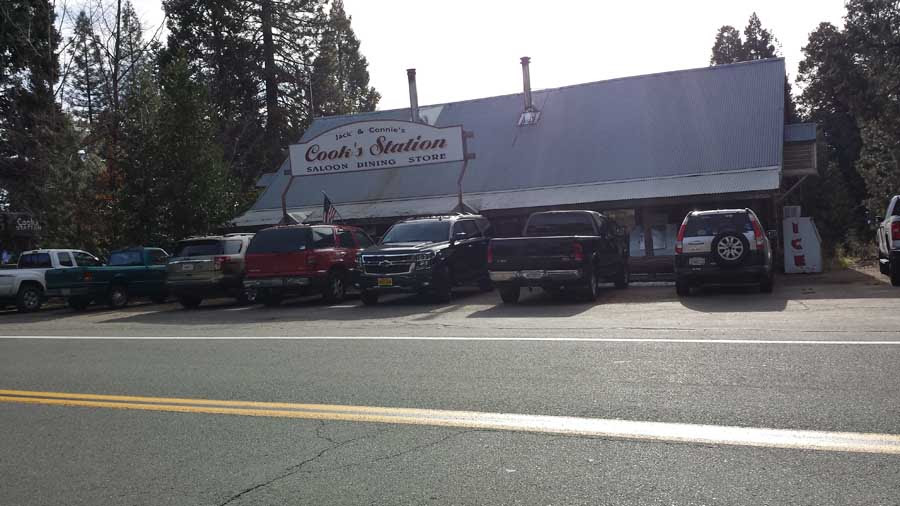
The “Volcano Cut-Off” had ferried travelers from the Old Emigrant Road in this direction since 1852. Then in 1862, Amador voters approved a $25,000 bond to finance a new and improved wagon road to the Amador county seat of Jackson — and it was to be a new toll road, mind you!

The merchants in Jackson were understandably in favor of this new enterprise, which would make it easier for traffic to reach the county seat. Yes, the new route was to be a toll road. But its advantages were substantial. For one thing it cut around the Carson Spur, allowing travelers to skip the arduous climb over West Pass. And as a new (and very expensive) roadbed, the going would be far better than the previous road. As Amador historian Larry Cenotto put it, “Roadside inns, like weeds, sprang up in anticipation” of the new wagon road’s opening!
By the summer of 1863, the new “Amador and Nevada Wagon Road” was open for business. With its start at Antelope Springs (Dewdrop), it continued east as far as Hope Valley (still part of Amador County until the following year).
The original establishment at the site now known as Cook’s Station was an inn owned by Charley Stedham (sometimes spelled Steadham), which opened as early as 1852 to serve travelers heading to Volcano. The way station went through several owners after Charley, becoming first Hipkin’s, then Wiley’s, and eventually Cook’s.
Sometime after 1905, the old way station was acquired by Louis H. Cook. A resident of Volcano, Cook served as an Amador County supervisor and also road superintendent for the section of state road west of Kirkwood’s. In addition to owning this famous wayside stop that now bears his name, Cook also was proprietor of the St. George Hotel in Volcano.
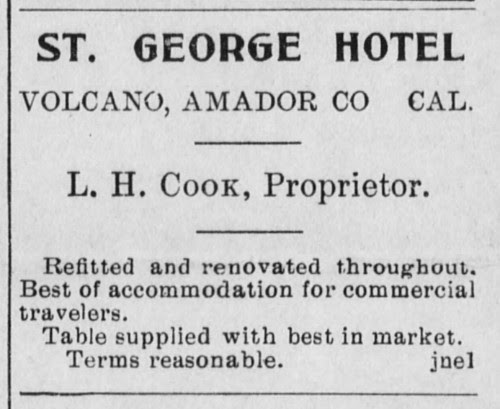
If you stop in for lunch at Cook’s Station today, be sure to check out their great old photos of this historic spot, including this one, below!
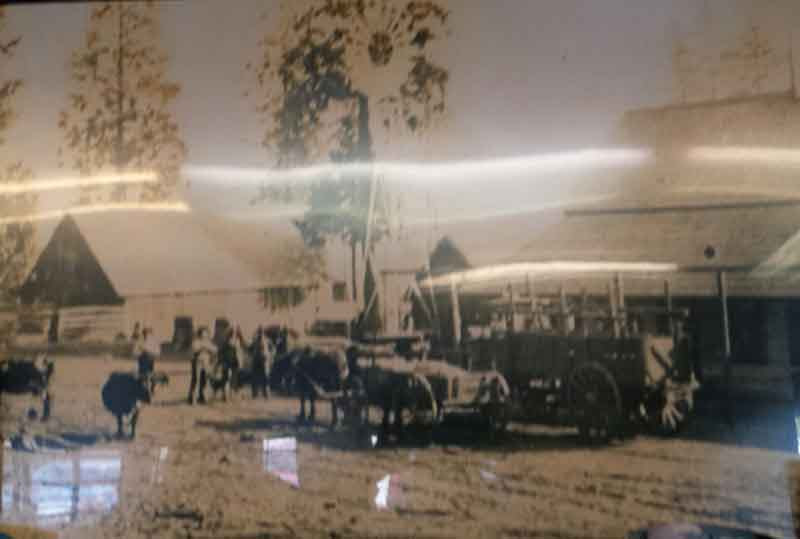
And don’t miss the great framed letter and wedding photo on the wall near Cook’s counter! Della Reeves Gillick wrote about working at Cook’s Station circa 1891-95, when her father operated the Station. Teamsters hauling lumber with 12-mule teams from the sawmill up the road would often stop in for a bite to eat or to spend the night. She describes the dirt road out front as “shoe-top deep” in dust, churned up by passing traffic (just as you can see in the photo above!)
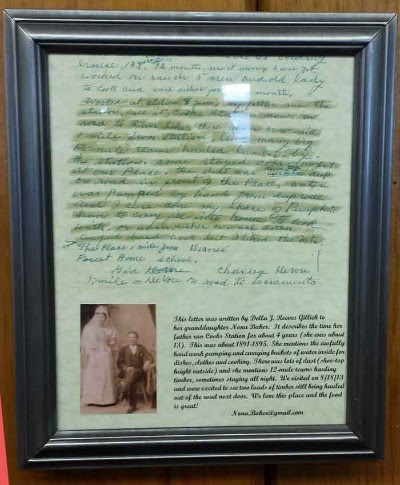
Gillick recalls pumping water by hand from the outside well and carrying it into the house to do cooking or laundry. “I sure done my share of pumpin’,” she recalls.
Ham’s Station, east of Cook’s on Highway 88, is another original stop along the old toll road. Amador historian Larry Cenotto notes that this site was originally Smith’s Hotel, built in 1863, and subsequently was operated by “Tulloch, Horsley & Co.” in 1864.
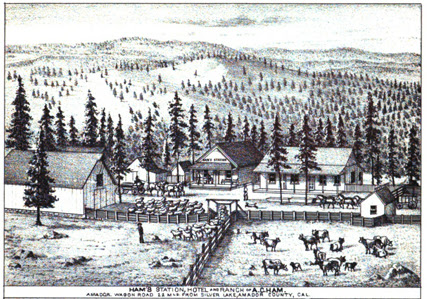
By the 1880s, the station had been acquired by A.C. Ham and his brother, who gave it the name it bears today: “Ham’s Station.” Born in Kentucky in 1841, Ham came west in 1855 to join his father, J.C. Ham, a builder who had emigrated earlier. A.C. Ham mined for a time before taking up the hotel business. He later became “sole owner of the Modoc mine in the Pioneer district.” There, it was said, he “is familiar with all the resorts of the grizzlies . . . for persons wishing for a few days’ rural amusement.”
In later, years, Ham’s Station was owned by W.E. Proctor, who sold it in 1900 to Joseph Dufrene for the sum of $450. In the early 1900s it went through a quick succession of managers, including John Votaw, Joseph Mello, and L. Mooney.
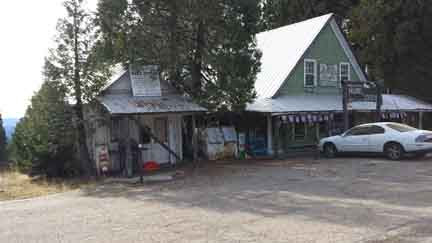
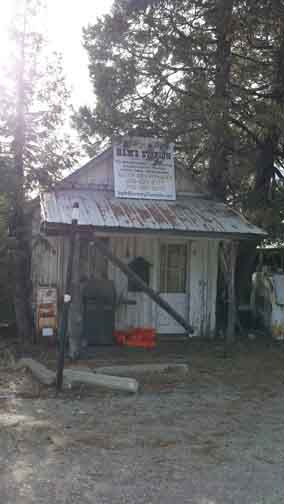
We hear that Ham’s Station has now been sold — kudo’s to whoever purchased this amazing bit of history!
A special thank-you to historian Frank Tortorich for his kind assistance with this article. We also were pleased to find great information in Larry Cenotto’s wonderful “Logan’s Alley,” Vol. V (2006, Word Dancer Press), which contains much more about the history of the Amador-Nevada Wagon Road and the pioneering Amador families!
_______________________________________
Karen Dustman is a published author, freelance journalist, historian, and story-sleuth. For more about Karen, her books and other fun stuff she’s written, check out her author website: www.KarenDustman.com.
________________________________________
